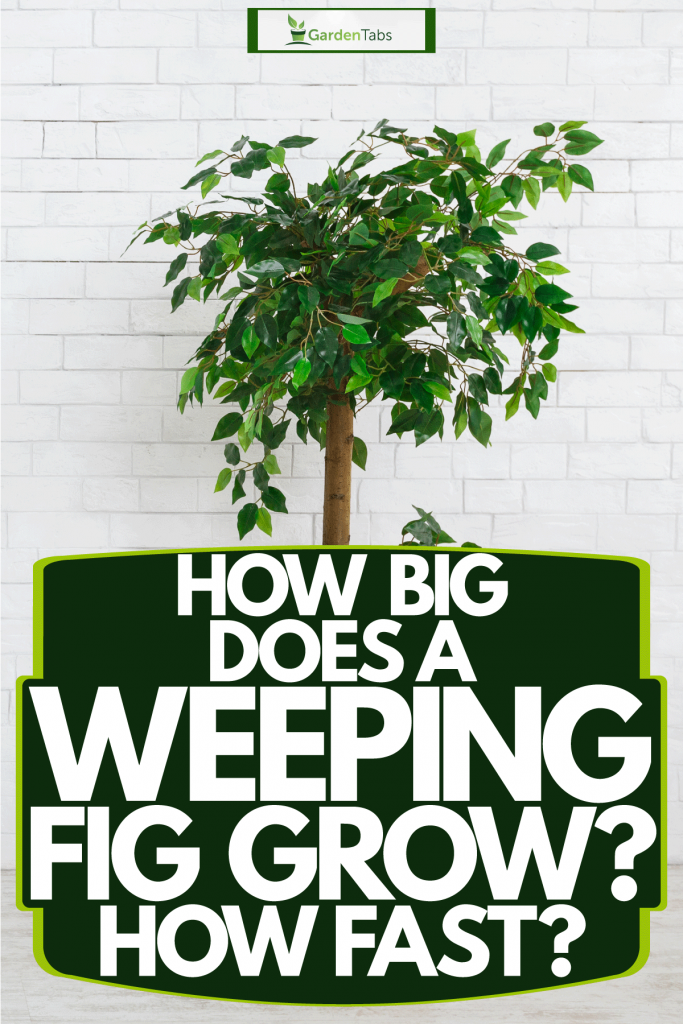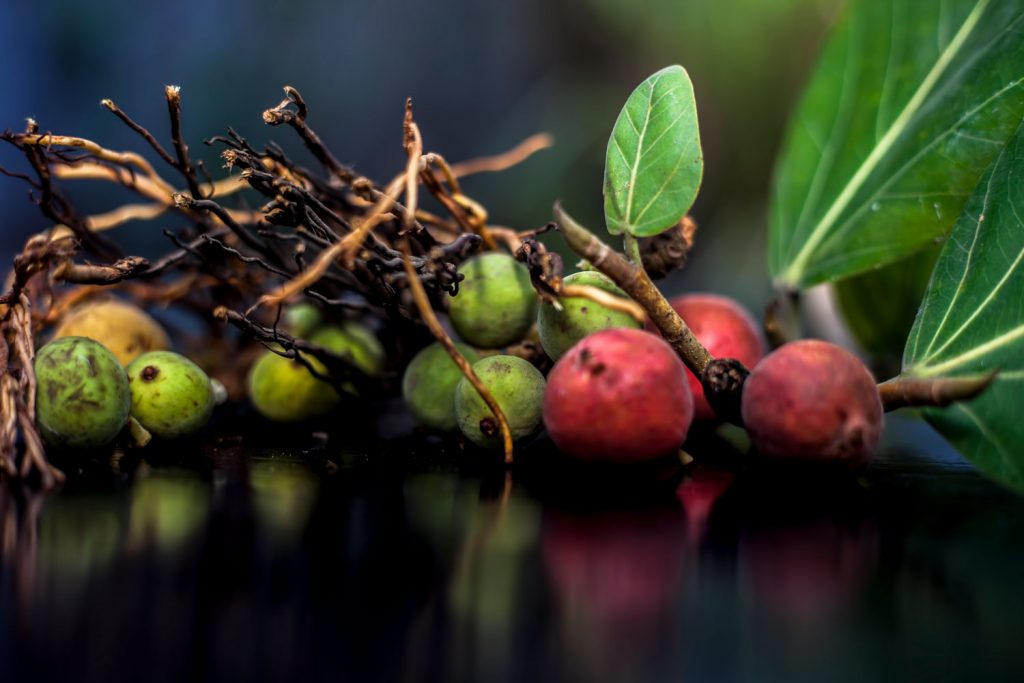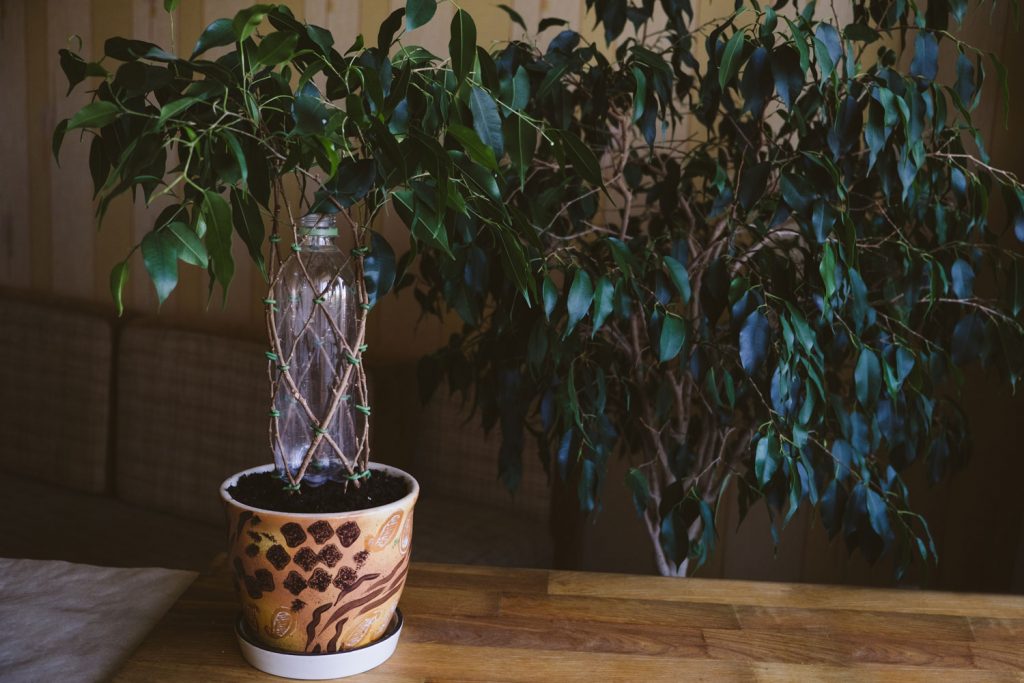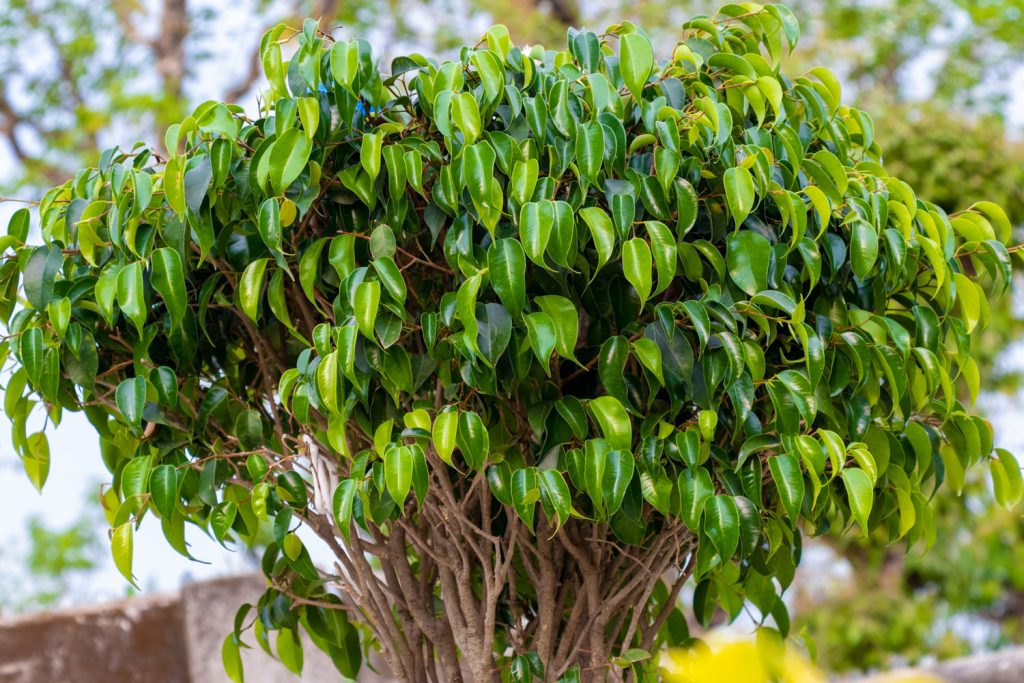Gardening techniques differ from plant to plant. Therefore, even if you are an experienced gardener who has never grown a weeping fig tree before, you will need some basic information before getting started. One of the most popular questions is how big weeping figs grow. After diligent research, we've outlined the answer below.
The Ficus Benjamina, better known as the weeping fig, has different growth types. This growth depends on whether you plant the tree indoors or outdoors. Inside, the weeping fig only gets to about 6 feet tall. However, it can grow up to 60 feet tall and 60 to 70 feet wide when planted outside, demonstrating an extremely rapid growth rate in both settings.
There is more to learn about weeping figs. Keep reading for more information on how to grow a weeping fig both indoors and outdoors. You'll also learn how to care for your weeping fig, what climate it prefers, and how fast it grows.

How Big Does a Weeping Fig Grow?
The weeping fig, while rapidly growing, displays completely different results when grown indoors and outdoors. When planted in a pot inside, it typically only grows approximately 6 to 8 feet tall, depending on how often you prune it. Outdoor weeping fig is a giant display, maturing at about 60 feet tall and 60 to 70 feet wide.

Indoor Growing Conditions

The Ficus Benjamina, or weeping fig, is a very popular indoor plant. Although its native habitat is tropical, you will find it in businesses and medical facilities. Many people even grow them for personal use in their homes.
While this versatile tree does need sunlight, it grows best when exposed indirectly. It can live in various lighting situations. The key is to make sure you are consistent. The watering technique is very important. With too much water, your tree will begin to grow fungus and mold. It may also start to lose leaves. The soil should remain moist but not wet.
Although the weeping fig often tops out at 6 feet when grown indoors, it can get larger if not properly pruned. Once it reaches the desired size, you can keep it from getting any bigger by regularly cutting the roots and the canopy. However, if its leaves begin to fade or look otherwise unhealthy, it may be time to repot your tree.

Outdoor Growing Conditions

The weeping fig can be massive when grown outside. Unlike many other trees, the weeping fig has invasive roots. The roots grow just as fast as the rest of the plant, and they get almost as wide as the tree does tall. Unlike other tree roots, the weeping fig grows aerial roots. Therefore, it's best not to plant it close to gardens, sidewalks, or buildings.
However, when grown in warmer climates lacking humidity, it will not produce aerial roots. Otherwise, the roots are a remarkable sight, growing from the branches down to the soil. It is common for people to braid the roots of the Ficus Benjamina, giving it an elegant display.
In humid conditions, the roots are known to break through structures, and the tree grows extremely tall. However, with proper maintenance, you can keep your ficus at a reasonable size. When pruning, take care to remove any dead leaves or limbs. To keep it manageable, you can cut up to one-third off the canopy at a time and the same from the roots.

How Long Does it Take for a Weeping Fig to Grow?
If left unpruned, an outdoor weeping fig can grow up to 25 feet tall within just ten years. According to the University of Florida, outdoor trees, left to their own devices, will mature at about 60 feet tall and 60 to 70 feet wide. Once pruned, it will regrow within approximately four weeks.
Ficus trees grow best during the hot summer season. During this time, they can grow 1 to 2 feet per month. Weeping figs especially thrive in climates with lots of thunderstorms.
You will see a slowing of growth during the colder winter months. Although the rate varies from tree to tree, expect to see about 4 to 8 inches of growth per month during this time. To increase the growth rate, plant your outdoor weeping fig in deep soil. Contrarily, you can plant it in dry, sandy soil to slow its growth.
How Do I Keep My Weeping Fig Bushy?
The bushiness of your weeping fig greatly depends on the environment in which you plant it. Your tree will grow a thicker, stronger canopy if given full sun exposure. However, shady areas will cause it to grow fewer leaves and have slender branches.

Can You Keep a Weeping Fig Small?

The weeping fig is one of the easiest trees to keep small. This is why it is so widely used for indoor planting. However, when planted outside, it is more challenging to keep a weeping fig small. If you choose the right size pot and prune your ficus regularly, it will maintain a small size. Many people even use them as bonsai trees.
When planting, make sure the roots are not squished into the pot. Give them a little space to grow. If they are too compact, the tree will eventually die. Once the roots begin to grow past the desired size, you can cut them up to one-third of their size. You should also cut one-third of the top of the canopy.
You can purchase your own weeping fig by following this link to Amazon.
How Do You Care for a Weeping Fig?
Weeping figs are pretty versatile; therefore, you have room for mistakes. The biggest mistake you can make when caring for a weeping fig tree is giving it too much water. A couple of mishaps with the watering can is okay, but if your tree is over-watered for too long, it will die.
Weeping figs are very tolerant when planted indoors. However, when planted outside, the tree is a bit pickier about its environment. It can only grow in USDA hardiness zones 10 and 11, though it can grow in many soil types, including clay, sand, and even mildly acidic soil.
Ficus Benjamina does not like too much water and is, therefore, very tolerable of droughts. Soil should be allowed to almost dry between waterings. Choosing a pot with proper drainage is important. Weeping figs are also not picky about their lighting situation, growing in various degrees of light. However, it grows best if you are consistent.
You can find good quality planters with proper drainage by following this link to Amazon.
To avoid loss of soil with your drainage planters, use these mesh pads from Amazon.
Temperatures
Since the weeping fig is native to tropical climates, it will not survive temperatures below 70 degrees Fahrenheit. At night, it prefers temperatures between 65 and 70 degrees. Do not expose your tree to frost. During the day, regulate temperatures between 75 and 85 degrees, and remember, they grow best in humid climates.
Propagating
While gardeners don't typically grow ficus trees from seeds, it is pretty simple to propagate weeping figs from healthy branches. Find a branch with at least three leaves, and cut a section that is 3 to 5 inches long. Take the leaves off the bottom half, planting the leafless section into a container. Your weeping fig should show sufficient root growth within 2 to 4 weeks.
Fruit

As you may already know, figs are suitable to eat off the tree, or you can enjoy them as jams and jellies. However, if your sole reason for planting a weeping fig is because you want the fruit, you will need to plant the tree outside. Indoor trees do not produce figs, but a properly maintained outdoor ficus will.
Summary
The weeping fig is a remarkable tree. Its versatility is amazing, growing differently in indoor settings than outside. Outdoors, it grows to enormous sizes, and the roots are destructive. The growth of both indoor and outdoor plants can be controlled with vigorous pruning.
Indoor plants are sometimes kept miniature size while others are allowed to grow to approximately 6 feet tall. For a more elegant tree, you can braid the branches. Learn the best way to do this by checking out our blog. Weeping figs need pots with proper drainage. Learn how to improve drainage for potted plants by reading this post on our blog.
If you're new to gardening, this can be a lot of information. If you are a rookie or don't have a green thumb, here are 11 more indoor trees that are hard to kill.



